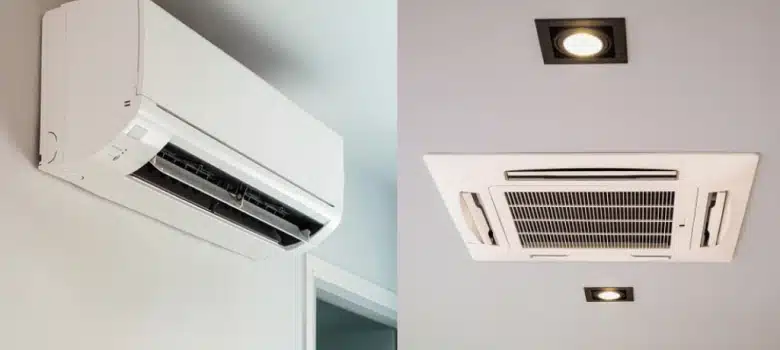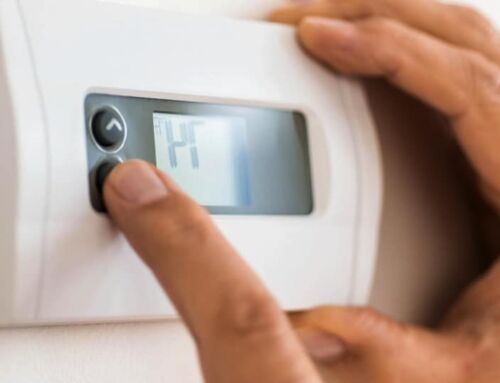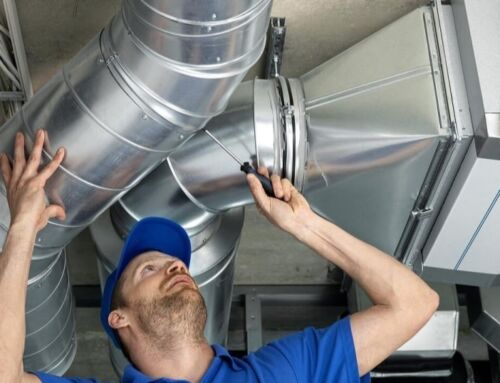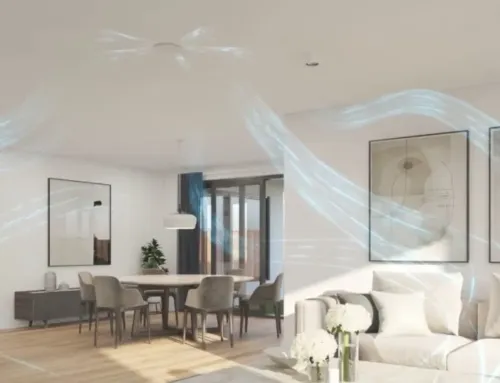In Sydney’s sweltering summers and chilly winters, a reliable air conditioning system is essential for comfort in your home or office.
Among the available choices, reverse cycle units and split system air conditioners are renowned for their efficiency and popularity.
But which system is right for you?
In this article, we’ll help you answer that question by covering the following topics:
- Overview of Reverse Cycle and Split Systems
- Comparison of Reverse Cycle vs Split Systems
- Incentives and Warranties
- Matching Your Space With the Right Aircon
- Conclusion: Making the Right Choice
| SUMMARY:
This guide aims to assist you in choosing the right system, whether you are constructing a new property, renovating, or upgrading your existing setup. |
Reverse Cycle vs. Split System: The overview
Reverse cycle units offer a unique advantage by providing both cooling and heating in one system. They operate by extracting heat from the outside air to warm your space in winter and reverse the process of cooling in summer.
On the other hand, split system air conditioners are popular for their cooling efficiency in warmer months. These units consist of an indoor unit that emits cool air and an outdoor unit that discharges heat. Their affordability and straightforward installation make them ideal for focused cooling in specific areas.
Reverse Cycle
Ideal for large spaces and homes undergoing major renovations or new construction, especially if ductwork is already in place.
Split System
Suitable for smaller rooms, apartments, or specific areas like bedrooms or home offices. These systems are less invasive to install, making them ideal for retrofitting.
Weighing Your Air Conditioning Choices
Selecting the most suitable option for your Sydney home or office means understanding the advantages and limitations of each type.
So let’s compare the pair.
Reverse Cycle Air Conditioning
Great For: Year-round comfort
Reverse cycle systems are all-encompassing, offering heating and cooling capabilities. Their ability to reverse the refrigeration cycle provides warm air in winter and cool air in summer, making them a versatile choice for Sydney’s climate.
Pros
✓ Versatile for heating and cooling, ideal for Sydney’s variable weather.
✓ Generally more energy-efficient, particularly in heating mode, which can reduce utility bills.
✓ Provides stable and consistent indoor temperature.
✓ More environmentally friendly, typically using less electricity and emitting fewer greenhouse gasses.
Cons
✗ Higher upfront costs than split systems.
✗ Installation can be more invasive and time-consuming.
✗ Might require more frequent maintenance in fluctuating weather conditions.
Split System Air Conditioners
Great For: Cost-effective A/C
Split systems, with an indoor unit for cooling and an outdoor unit for heat expulsion, are primarily used for cooling, though some models offer heating capabilities.
Pros
✓ Generally less expensive to purchase and install.
✓ Easier installation process, suitable for smaller spaces.
✓ The indoor unit operates quietly, making it ideal for bedrooms and studies.
✓ Excellent for cooling specific areas or rooms.
Cons
✗ Primarily designed for cooling; the heating function (if available) is less efficient than the reverse cycle.
✗ This may necessitate an additional heating system in winter.
✗ Typically cools one specific area, not ideal for large, open-plan spaces.
How to Pick the Perfect A/C System
When deciding between reverse cycle and split system units, consider efficiency, cost, durability, aesthetics, and environmental impact.
Efficiency and Performance
- Reverse cycle units are highly efficient, particularly in heating mode, and maintain consistent temperatures, suitable for fluctuating weather.
- Split systems excel in cooling-specific areas but may fall behind reverse cycle units in heating efficiency.
Is AC Maintenance REALLY Worth It? Get the Facts
Cost (Initial and Ongoing)
- Reverse cycle systems have a higher initial cost but can lead to long-term savings due to their energy-efficient operation.
- Split systems are more cost-effective upfront, particularly for cooling single rooms or smaller spaces.
Durability and Lifespan
- Reverse cycle units are generally robust and long-lasting, especially with regular maintenance.
- Split systems also offer a good lifespan, varying based on model and usage.
Aesthetics and Space Considerations
- Reverse cycle units typically require more installation space, which might impact home aesthetics.
- Split systems are sleek and less intrusive, suitable for wall mounting in smaller spaces.
Environmental Impact
- Reverse cycle units are often more eco-friendly due to higher energy efficiency and lower emissions.
- The eco-friendliness of split systems varies by model, with newer versions being more energy-efficient.
Additional Factors
- Climate Suitability: Reverse cycle units are better for areas with extreme seasonal variations, while split systems suit predominantly warm climates.
- Installation Requirements: Evaluate the complexity of installing each system in your space.
- Maintenance Needs: Reverse cycle units might need more frequent servicing.
Navigating Government Incentives and Warranties
Choosing an aircon system also involves understanding available financial benefits and protections. Government incentives and warranties can influence your decision between reverse cycle and split system units.
Government Incentives for Air Conditioning in Sydney
Reverse Cycle Air Conditioning:
- Energy Efficient Homes Rebate for high-efficiency installations.
- Renewable Power Incentives for certain models, offering discounts or rebates.
Split System Air Conditioners:
- Small-scale Technology Certificates (STCs) for energy-efficient units.
- Local Government Schemes for installing energy-efficient cooling systems. Learn about STCs and local incentives
Warranties
Reverse Cycle Air Conditioning Warranties:
- Manufacturer Warranties typically range from 5 to 10 years.
- Some brands, such as Samsung, offer extended warranties for an additional cost.
Split System Air Conditioner Warranties:
- Standard Manufacturer Warranties usually last 5 to 7 years.
- Dealer Extended Warranties are sometimes available for additional coverage.
Does Size Matter?
The choice between reverse cycle and split system air conditioning often depends on your specific installation scenario. Whether you live in a compact apartment, a large suburban home, or manage a commercial space, the right system can significantly enhance your comfort.
- Reverse Cycle Air Conditioning: Ideal for large spaces and homes undergoing major renovations or new construction, especially if ductwork is already in place.
- Split System Air Conditioning: Suitable for smaller rooms, apartments, or specific areas like bedrooms or home offices. These systems are less invasive to install, making them ideal for retrofitting.
Other Considerations
- Aesthetics: Split systems are more discreet compared to the larger reverse cycle units.
- Budget: Split systems are generally more affordable, especially for smaller installations.
- Future Flexibility: Reverse cycle systems may offer more adaptability for changing needs.
By assessing your space, installation capabilities, and long-term needs, you can choose the system that aligns with your lifestyle and needs.
Check Out These Free Resources for Help Making the Smart Choice
Both reverse cycle and split system air conditioning units offer unique advantages, suited to different environments and needs.
Remember to consider your home’s layout, climate requirements, and budget to make a well-informed decision for year-round comfort.
Looking for more help keeping your home comfortable and cool? Check out our most popular resources:
Ready to Cool Down or Heat Up? Contact HunterCON Today!
For personalised guidance in navigating Sydney’s air conditioning options, reach out to HunterCon.
Our team is committed to helping you find the air conditioning solution that best fits your unique needs. Whether you’re looking for advice, installation, or maintenance services, HunterCon is here to assist.
Don’t let Sydney’s weather dictate your comfort. Contact HunterCON for a friendly chat, professional advice, or a no-obligation quote, and take the first step towards a more comfortable, energy-efficient home or office for a free and fast quote.”
Contact HunterCON on 02 8283 1105 or request a custom and 1005 obligation-free quote online.







Leave A Comment